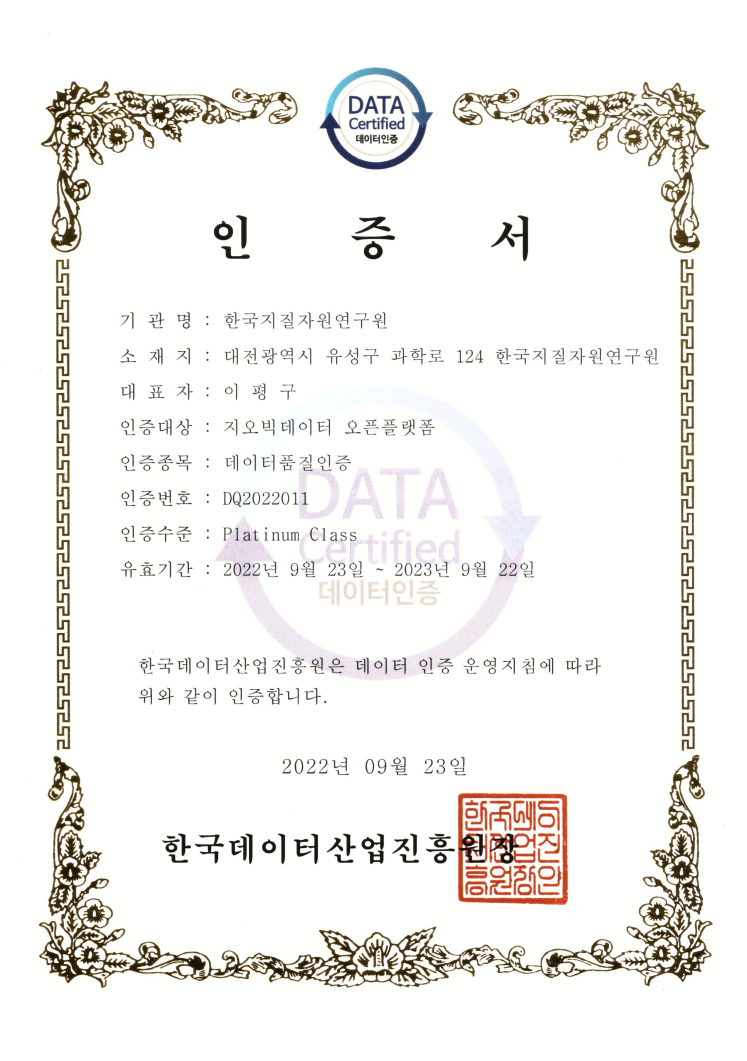Data Quality Certification (DQC-V)

| Data type | KIGAM 보고서 |
|---|---|
| Title | 석유지질, 지화학 및 층서퇴적연구 |
| Author | 손진담 |
| Language | KOR |
| Call Number | KR-99-R-16-2000-R |
| Publication Information | 한국자원연구소, 2000 |
| Abstract | 기술개발의 내용 및 범위는 아래와 같다. 1)생층서분석-퇴적층내 미화석을 관찰하여 지질시대를 결정하고 고환경을 유추. 2)암층서분석-퇴적층의 특성을 파악하여 지층의 분대 및 층서 대비. 3)퇴적상분석-상분석과 상조합에 의하여 퇴적층의 형태와 퇴적환경을 해석. 4)지질구조분석-분지형성기작과 지층의 변형상태를 파악하여 저류트랩규명. 5)퇴적암석분석-퇴적암의 성분과 조직 및 속성작용연구로 저류암의 특성파악. 6)유기지화학분석-퇴적암의 유기물양과 열경력을 측정하여 석유생성력평가. 7)석유잠재력평가-석유광상의 구성요소(근원암, 저류암, 덮개암, 트랩)와 형성과정(트랩의 형성시기, 석유생성-이동-집적)을 진단하여 매장량을 파악 Since 1992 sedimentary basin analysis to assess petroleum potential of the Cretaceous and Tertiary strata in the Korean onshore and continental shelf have been carried out. The Cretaceous non-marine strata mainly occupy the Gyeongsang Basin in southeastern part of the Korean Peninsula and small basins such as Haenam and Gyeokpo depressions in western coastal areas. The Tertiary strata are mostly distributed in Domi, Cheju, Socotra subbasins, and Okinawa Trough in the South Continental Shelf, and Kunsan and Heuksan basins in the West. The basin evolution and petroleum potential for each basins are characterized as follow. The Crtaceous Gyeongsan sediments were deposited in three subbasins including Milyang, Euisung and Yongyang subbasins. Based on the volcaniclastic sediment distribution, the Gyeoungsan Supergroup can be subdivided into Sindong, Hayang and Yucheon Groups. The Sindong Group was deposited in alluvial fan, floodplain and lacustrine margin environments: the Hayang Group was formed in flood palin, alluvial fan, braided stream and shallow lacustrine environments. The black shales in Nakdong and Jinju formations are interpreted to contain abundant organic matter during the deposition, thermal maturity reaching up to the zone of dry gas formation. Because porosity and permeability are too low, the sandstones can act as a tight gas reservoir rather than conventional oil and gas reservoir. The latest Cretaceous strata of Haenam and Kyeokpo depressions in western costal area are correlated into the Yuchon Volcanic Group of the Gyeongsang Basin. Lacustrine shales in the middle part of the Yuchon Group should be good source rocks in the Haenam depression with high TOC values, but those in the islands and Kyokpo depression have relatively low TOC values. Fractures and faults made by post-depositional deformation could be good reservoirs. Petroleum potential of the Early Cretaceous basin in the West Continental Shelf could be relatively high in terms of sedimentary basin filled with thick lacustrine sediments. The Kunsan basin in the West Continental Shelf originated in the Early Cretaceous time expanded during the Paleogene time followed by regional erosion at the end of Paleogene on which Neogene sediment have been accumulated. The Paleocene-Eocene sublacustrine shales may play an major role as a source and cap rocks. Organic geochemical analysis indicates that TOC content is very low (below 0.5%) and organic matter can correspond to Type III. In addition, the sublacustrine fan sediments can serve as good resevoir rocks. South Continental Shelf Basin is subdivided by Cheju subbasin in the center, Socotra Subbasin to the west, Domi Subbasin to the northeast and Okinawa Trough to the East. The Cenozoic strata in the Basin can be divided into 4 megasequences by regional unconformity such as megasequence D (Oligocene), megasequence C (early Miocene), megasequence B (middle to upper Miocene) and megasequence A (Pliocene to Quaternary). Megasequence D is limited to the depressed zone of the half-grabens and grabens and other upper megasequences are developed in the basin-wide. Early Miocene lacustrine sequences are considered as good source rocks and Oligocene and Miocene lacustrine sandstones are highly porous and permeable, having good reservoir potential in the Cheju subbasins. The thermal maturity reached to the oil generation zone around the 2,500 m to 3,000 m and to the wet gas generation zone at 3,500 m. Based on the geochemical modeling, the sequence earlier than 1,000 my is only prospective in the Basin. The potential hydrocarbon traps associated with anticline, titled fault blocks, fault, unconformity, stratigraphic trap and rollover structures which were formed in the Oligocene and Late Miocene. The Cheju subbasin is more suitable for petroleum system investigation in the near future |
| Page | 178 p. |
| Keyword | 석유화학, 지화학, 층서, 퇴적, 석유, 대륙붕 |
| Source |
Comments